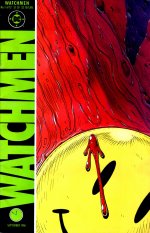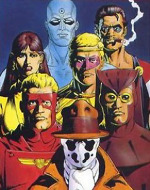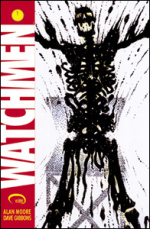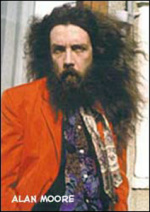
| View All | Search | View Statistics |
 Watchmen WatchmenReview by TheNameless, February 13th 2007, 15:04:56 | |||
| Who watches the Watchmen?
The Comedian is dead. And so is the world of the real superheroes. That is the Situation at the beginning of the comic "Watchmen" by Alan Moore (writer) and Dave Gibbons (illustrator/letterer). Many people refer to this piece of artwork as more than a comic: A graphic novel. These are some sort of illustrated stories which try not to be just thoughtless entertainment. It won many awards since its publication 1986/87 including the famous Hugo award and is part of Time Magazine's list of the 100 best novels. It imagines a world in which the superheroes became real. But not like Superman. Alan Moore places Normal people in costumes and puts them in the deep and dark world of the cold war. The Story Edward Blake was killed. Thrown out of the window of his apartment in a skyscraper in downtown New York. No Clues. He was formerly known as The Comedian, a masked vigilante who used to fight crime in the streets. It is now the mid-eighties and since the Keen Act, crimefighting in costumes is against the law and most superheroes retired. Some of them wrote their autobiography, some are working for the government and some get killed. And one of them is still active. His name is Rorschach and most people regard him as completely insane. He investigates the recent killings of former masked adventurers. He talks to retired villains and old friends but the case just doesn't seem to make sense. Meanwhile Russia invades Pakistan and tanks gather in east germany. Will the president consider a first strike on the enemy? The whole world is on the edge of nuclear doom. The story takes place under the dark preapocalyptik mood before a third world war. The heroes who started acting in the late thirties were outlawed in their second generation in 1977. They are just as powerless, as the rest. The uncertainty principle lives. Schroedinger's Humankind: Is it dead or alive? Narrating Technique The story isn't verly linear. There is no real main character. It's told from the point of view of various persons and has a busload full of subplots. They seem to be independent, describing the world the story takes place in, but in the end they are all connected. The reader realizes that at the end of the story, so somehow with all the little but important hints you overlooked at the first perusal, you almost get forced to read it again. The second time you're gonna be even more impressed reading it. Watchmen is devided into 12 Chapters, each ending with 3 to 4 pages of texts from this world. For example an excerpt from the autobio of one of the first masked vigilantes, describing why he became one. Or newspaperarticles from the New Frontiersman, a rightwing paper. The sources couldn't be more different. All written in their own authentic style, just like each and every individual charakter has its own way of speaking. The texts create a whole lot of atmosphere, interrupt the comic reading a bit, though. The style in general is abolutely excellent, the language is really sophisticated. If you are not a native english-speaker, the dictionary should lie right next to Watchmen. The Art Drawn by Dave Gibbons and colored by John Higgins. Since it was drawn in the eighties and is a superhero story it has the really classical style of e.g. superman comics. It is of course a bit more detailed and has much more blood than the comics of the most famous crimefighter, but I think it is comparable. There are often really creative changeovers from scene to scene and the art is just as important for telling the story as the text. You can have a look at the art in the uploaded pictures. Also there's a link, where all pages of the comic can be seen. I found this site via Google and I don't know whether this is ok with copyright law, but... it's good to get an impression of the drawing style. A story is just as good as its writer Who is Alan Moore? He was born 1953 in Northampton, central England, and still resides there. Born under rather poor circumstances and influenced by many comics, especially Superman, he was expelled from school and managed to get small jobs as a cartoonist, but later as a writer for small series and became famous doing it. His most famous works are: V for Vendetta, Swamp Thing, Marvelman (also Miracleman), The League Of Extraordinary Gentleman, From Hell and quite some more. He was and still is one of the leading innovators of the comic genre and was the first one to bring topics to comics which were not at present in the medium at all. He is often referred to as the father of the graphic novel, but he himself just calles his genre comic. He is also a big critic of the mainstream comics. Many awards have been given to his works which are very often of an experimental nature. Personal impressions Watchmen is much like a parody of all the superhero stories, not in a funny but a tragic way. It really gets you to think about certain issues pretty hard, it forces you to do that. The story is digging into the deepest abyss of human morality and leaves you to give an answer. The connection of all the story parts and the creation of the whole world and its atmosphere is simply incredible. It is one of the most sophisticated and impressive pieces of art I have come across to this day. Even if you are not into comics or superheroes, this is highly recommendable. Though you will have to pay to buy and read it, you will be richer afterwards. |      Links: | ||
| |||
| How readers rate this Review: 9.66/10 (3 votes) | |||
| If you want to add your comment you must login or register first. | |||
| View All | Search | View Statistics |









